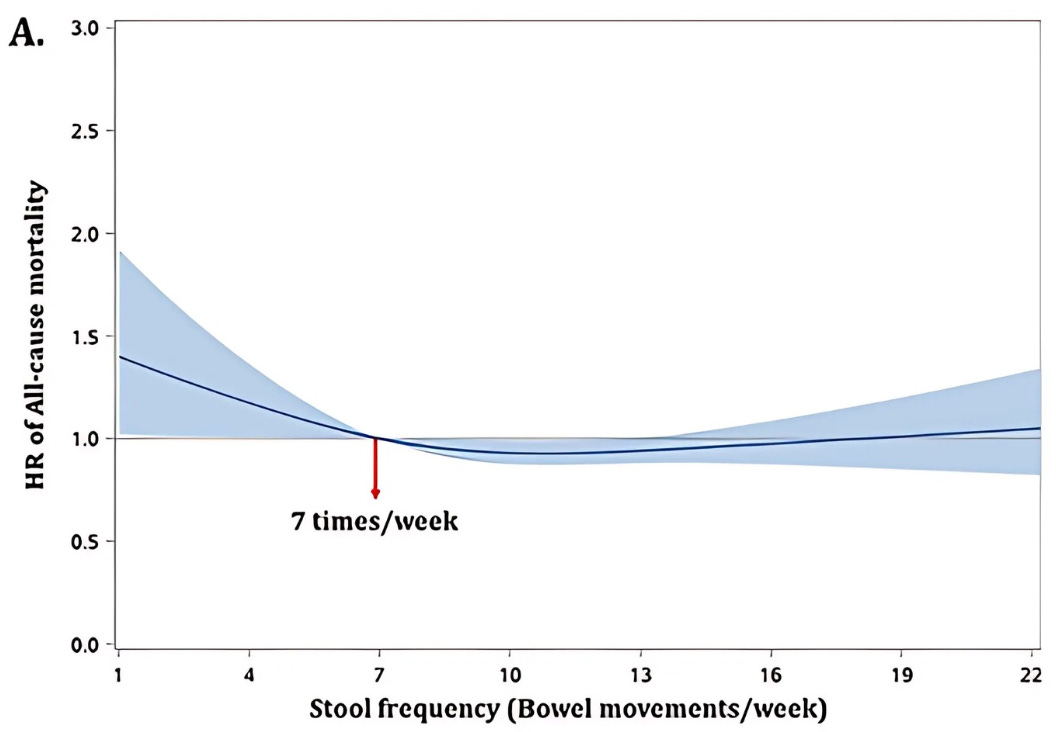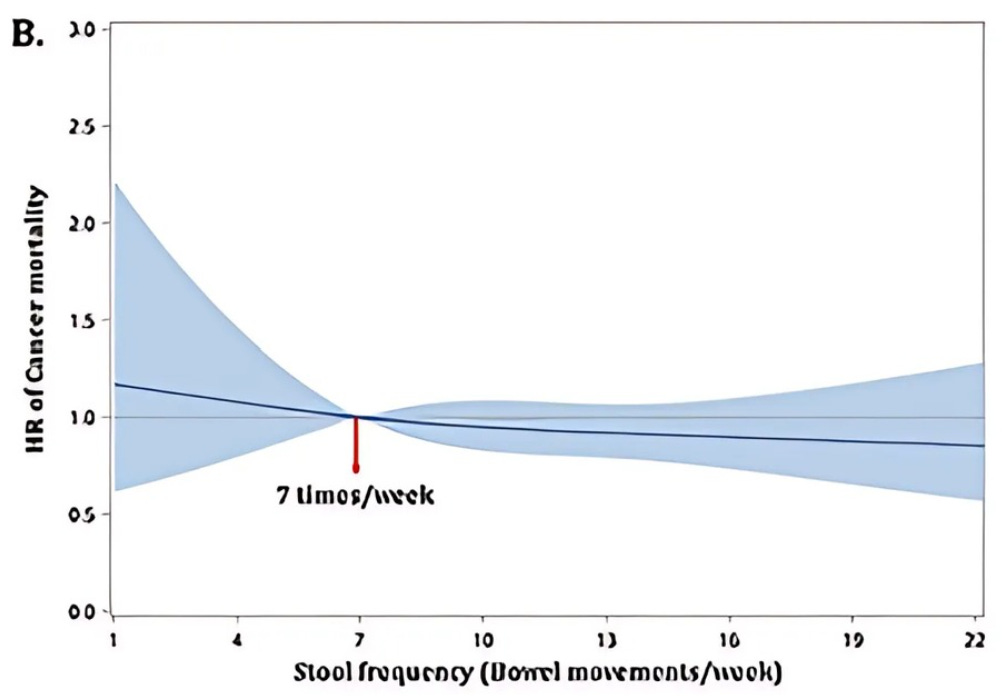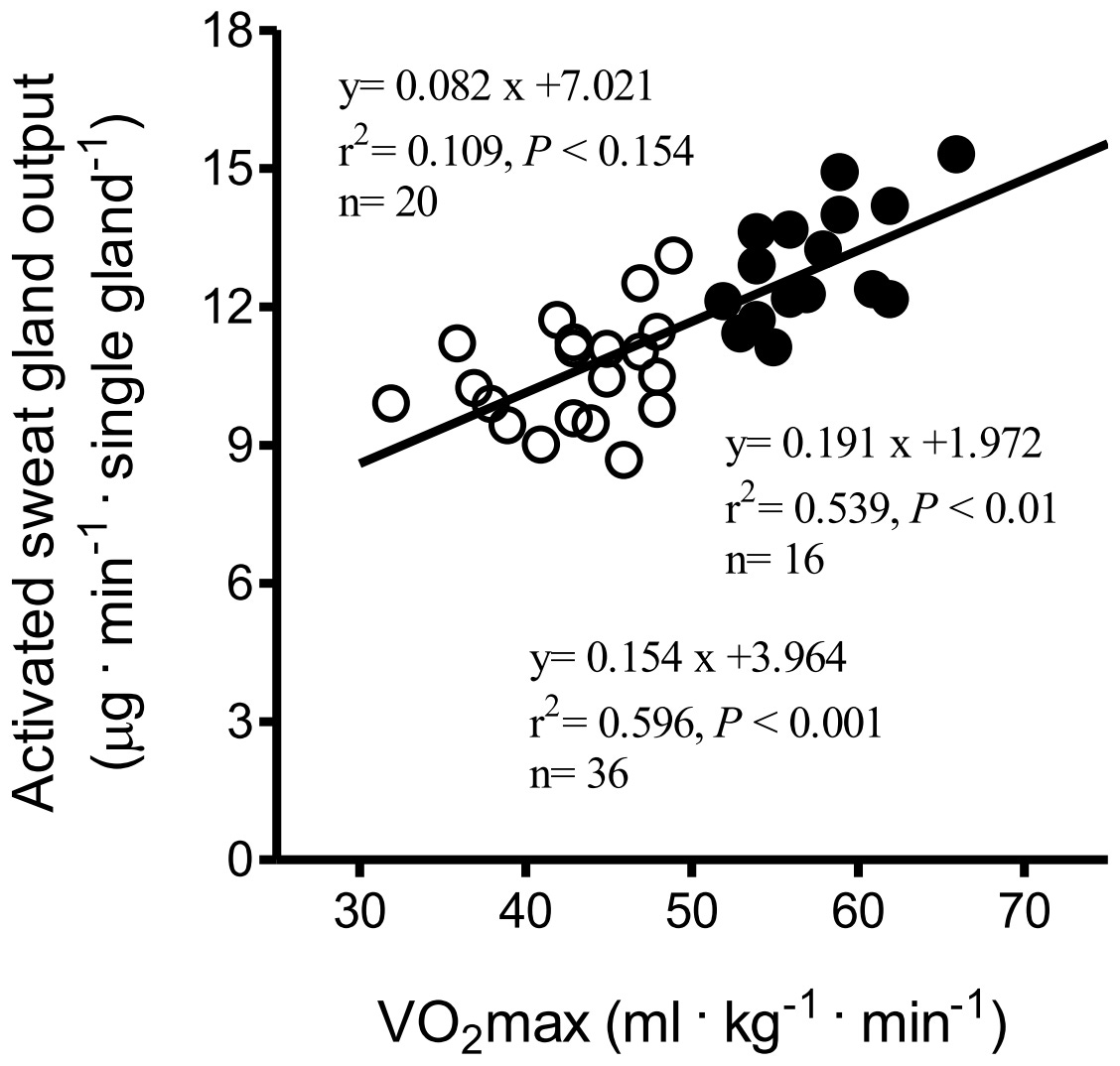Unquantifiable Biomarkers of Elite Health
11 functional signals for stress resilience, metabolic flexibility, & circadian alignment
You can’t spreadsheet your way to a life well lived.
Some of the most predictive markers of long-term health resist quantification entirely. They exist in daily patterns, subjective experiences, & functional capacities that no device can capture — a human feature, not a bug.
This isn’t an argument against leveraging data. But the longevity space continues to solely chase quantifiable metrics with little reverence to the unquantifiable signals of health. We need both.
If elite health has a phenotype, this is what it looks like in practice.
Here are the 11 subtle signs you’re in an elite health status.
Sign #1: High Sleep Pressure & Low Anxiety ~9 PM
Feeling genuinely tired 1-2 hours before bed is one of the most reliable indicators of circadian synchronization you can track without any tech.
The Science of Sleep Pressure
Your sleep drive operates through two complementary systems1: homeostatic sleep pressure (Process S) & circadian timing (Process C). Process S builds throughout the day as adenosine accumulates in your brain. Process C syncs to your light environment creating predictable daily rhythms.
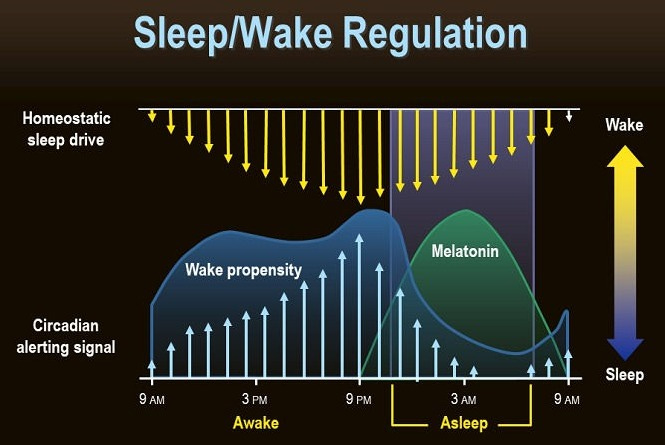
Around 9 PM, natural sleep drive peaks2. As the day progresses, adenosine builds up and binds to adenosine receptors (A1 & A2A). If adenosine sounds familiar, that’s because caffeine functions by blocking these receptors to promote wakefulness. Accumulated adenosine suppresses wake-promoting neurons (i.e. orexin, histamine) while activating sleep-promoting pathways & melatonin release.
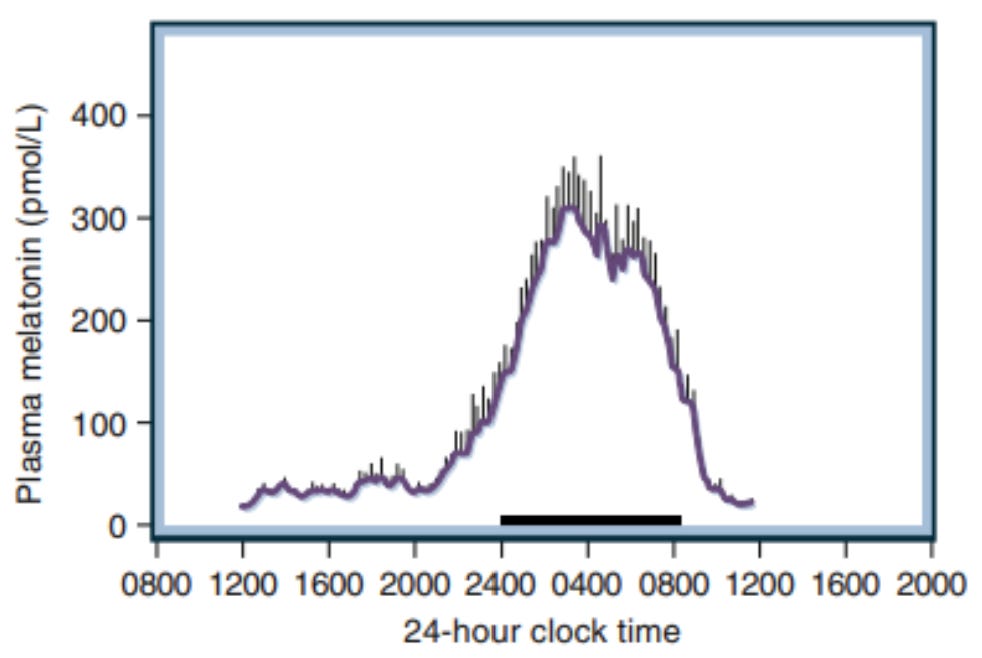
The Cortisol Connection
Evening calmness is equally telling. Healthy cortisol levels follow a natural daily pattern: peaks 2-3 hrs after waking, drops rapidly around midday until ~8 PM before eventually hitting its trough ~9 PM.
Low stress & anxiety in the evening signal this rhythm is intact.

What Sets the Timer?
Low-angle sunlight rich in red & infrared wavelengths. Each sunrise flips an hourglass — setting a biological timer determining when you’ll feel sleepy that evening. Bright midday light & sunset exposure reinforce the signal.
Final note here: If you want to understand just how critical circadian alignment is for metabolic, immune, & cognitive health in particular — invert to see the ramifications of chronic circadian misalignment3. (Abridged Version: Less than ideal.)
Sign #2: Daily Bowel Movements
Until recently, “normal” bowel frequency ranged from multiple times daily to a few times per month. We now understand how abnormal infrequent elimination actually is.
The Gut-Brain Connection
Ma et al. (2023)4 analyzed 112,000 subjects and found bowel movements fewer than 4x/week correlated with ~3 years of accelerated cognitive aging & 73% worse overall cognitive function.
The implications extend beyond the brain.
Mortality Risk
A review by Peng et al. (2022)5 of nearly 15,000 subjects showed pooping fewer than 7x/week increased all-cause mortality risk by 43% compared to daily movements. Those having bowel movements just once weekly faced the highest risk.
Frequency alone doesn’t tell the complete story. Compared to 7x/week, those pooping 4x/week with soft stools showed:
1.78x higher all-cause mortality
2.27x higher cardiovascular mortality
2.42x higher cancer mortality
What Healthy Elimination Produces
Johnson-Martinez et al. (2024)6 examined 1,400 healthy adults. Those pooping 1-3x daily had significantly higher levels of beneficial short-chain fatty acids like butyrate and greater proportions of protective bacteria.
Conversely, bowel movements fewer than 3x/week correlated with elevated blood toxin levels.
The Mechanism
Let’s provide a simple breakdown on this:
Infrequent bowel movements
Stool remains in the colon longer
Gut bacteria switch from fiber as main fuel to fermenting protein
Without fiber - our gut microbiome starts producing harmful metabolites like phenylacetylglutamine (linked to CVD) & indoxyl-sulfate (linked to kidney damage)
Toxins enter bloodstream
Negative long-term outcomes downstream = more anxiety + more visceral fat + more systemic inflammation + acceleration of artery hardening + more neurodegeneration
Sign #3: Effortless 36-Hour Fast
Fasting capacity functions as a stress test for metabolic health. Specifically, your ability to switch fuel sources efficiently.
The Metabolic Switch
This refers to your body’s capacity to transition seamlessly from burning glucose to oxidizing fatty acids & ketone bodies. The ease with which you complete a 36-hr fast reveals how well this metabolic switch operates.
Insulin Sensitivity Under Stress
Metabolically healthy individuals demonstrate superior insulin sensitivity in adipose tissue. During fasting, insulin receptor binding enhances and overall insulin sensitivity increases 3-4x7.
The idea of becoming more insulin sensitive seems paradoxical while fasting but it demonstrates tissue-level hormone responsiveness despite energy restriction. Your cells remain metabolically flexible under stress (applies for HIIT too!).
Preferential Fat Mobilization
Fat mobilization quality matters as much as quantity. During extended fasting, optimal metabolic health shows up as preferential mobilization of visceral fat stores8.
Not only is it one of the most powerful tools at our disposal to improve leptin & insulin sensitivity. But a 36-hr fast will also make a few eggs & avocado taste like a Michelin star meal.
Sign #4: Hungry In Morning & Satiated After Sunset
Those who propose the idea "breakfast is a scam" often cite the story of Edward Bernays9 & his role as the marketing guru at Beech-Nut. The argument usually stops there, but the problem is it’s a fundamental misunderstanding of circadian biology.
Appetite as a Circadian Signal
Robust morning hunger & natural evening satiety indicate internal biological clocks synchronized with environmental & metabolic demands. This integration of circadian rhythms with nutritional physiology is called chrononutrition.
Why Morning Hunger Matters
Cortisol rises naturally upon waking, promoting glucose production and creating an energy demand signal. Simultaneously, ghrelin (hunger hormone) reaches its circadian peak during morning hours regardless of when you last ate. This combination signals metabolic readiness to begin the day’s energy processes.
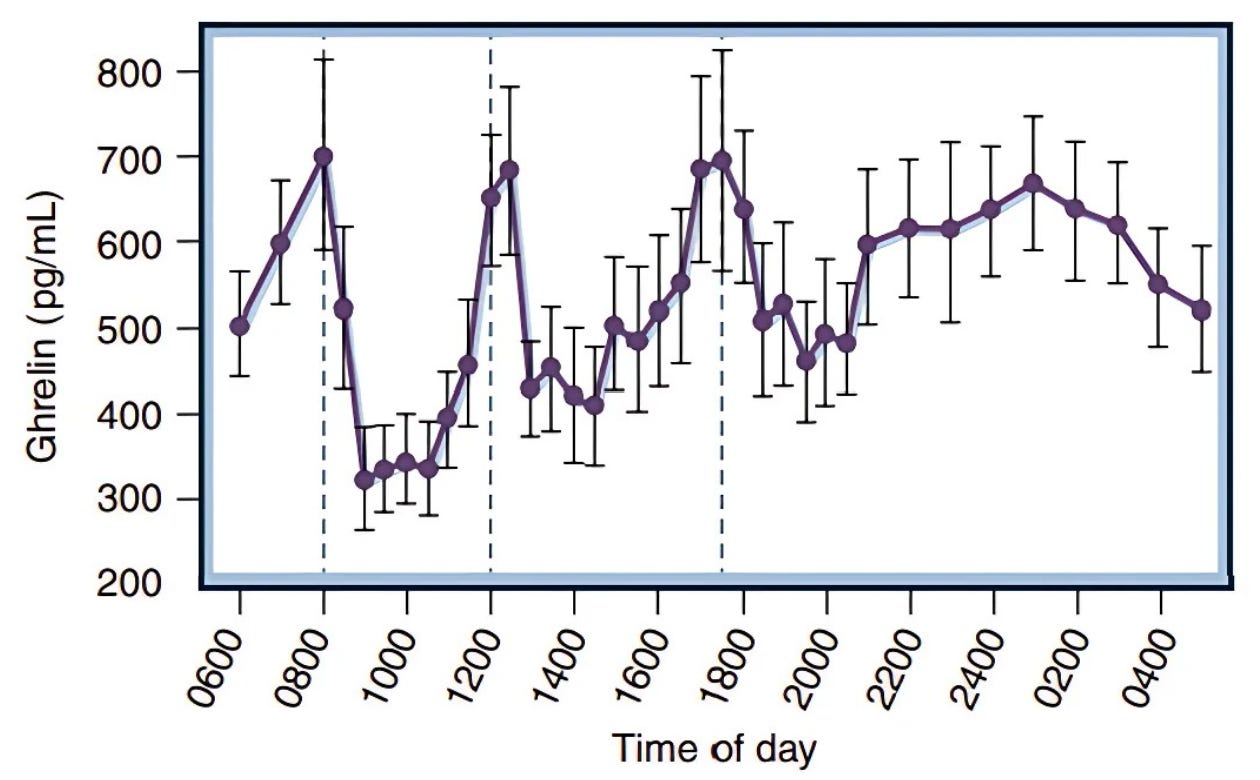
Why Evening Satiety Matters
Evening fullness reflects coordinated biological preparation for overnight fasting. Leptin begins rising during evening hours, while hitting peak levels during early sleep10. Beyond signaling satiety, leptin communicates adequate energy reserves for the fasting period ahead.

When the Signal Breaks
Disrupted appetite rhythm reveals underlying metabolic dysfunction:
No morning appetite → blunted cortisol awakening response or ghrelin resistance
Late evening hunger → leptin resistance or circadian dysregulation
If you wake up hungry & satisfied after dinner, your metabolic clocks are working as designed.
Sign #5: Not Waking To Pee At Night
The standard advice here: ”stop drinking liquids by 8 PM”. While it addresses symptoms, it fails to address causes for many. Most people implement this rule yet still wake to urinate. The issue lies upstream.
The Brain-Kidney-Bladder Axis
Chronic nighttime urination signals disrupted biological rhythms affecting the brain-kidney-bladder axis. During sleep, your central clock (suprachiasmatic nucleus) synchronizes with peripheral clocks ensuring urine production is suppressed and bladder capacity is maintained11.
This occurs through hormonal signaling: increases in antidiuretic hormone (ADH/vasopressin) and aldosterone promote reabsorption of water and sodium concentrating urine & reducing volume.
What Desynchronizes the System
When this axis falls out of rhythm, several factors typically contribute:
Circadian disruption:
Metabolic dysfunction:
Nutritional imbalances:
Electrolyte imbalances16 → ideal Na:K ratio = 1:2 - 1:3
Sign #6: 45-Minute Continuous Run
The capacity for a 45-minute continuous run integrates cardiovascular, respiratory, muscular, & metabolic function into a single measurable output.
Why 45 Minutes?
We’re not saying you need to be able to conduct 7-min miles here. Instead, it’s about the ability to test multiple features across our cardiometabolic state:
Aerobic capacity → efficient oxygen delivery and utilization across large muscle groups
Cardiac output → maximized stroke volume supporting sustained activity without excessive fatigue
Mitochondrial density → high mitochondrial concentration in muscle tissue enabling efficient ATP production & delayed fatigue onset
Lactate threshold → ability to operate near your lactate threshold while clearing lactate effectively for steady energy output
Vascular health → blood vessels adequately deliver nutrients & remove metabolic waste during sustained effort
Metabolic flexibility → seamless fuel switching between glucose & fat oxidation
Whether you’re 20 or 60, continuously moving at ~9 minutes/mile for 45 minutes represents an achievable benchmark for elite cardiorespiratory health.
Sign #7: Traffic Doesn’t Trigger You
Someone cuts you off. The light turns green & the car ahead doesn’t move. Minor annoyances but your autonomic nervous system stays regulated.
A nice proxy for balanced neurochemical & hormonal function.
GABA/Glutamate Balance
Low GABA relative to glutamate increases “neuronal noise” in threat-processing circuits heightening reactivity to non-threatening stimuli (i.e. bad drivers). When this ratio is optimal, minor stressors don’t activate the primal defensive responses.
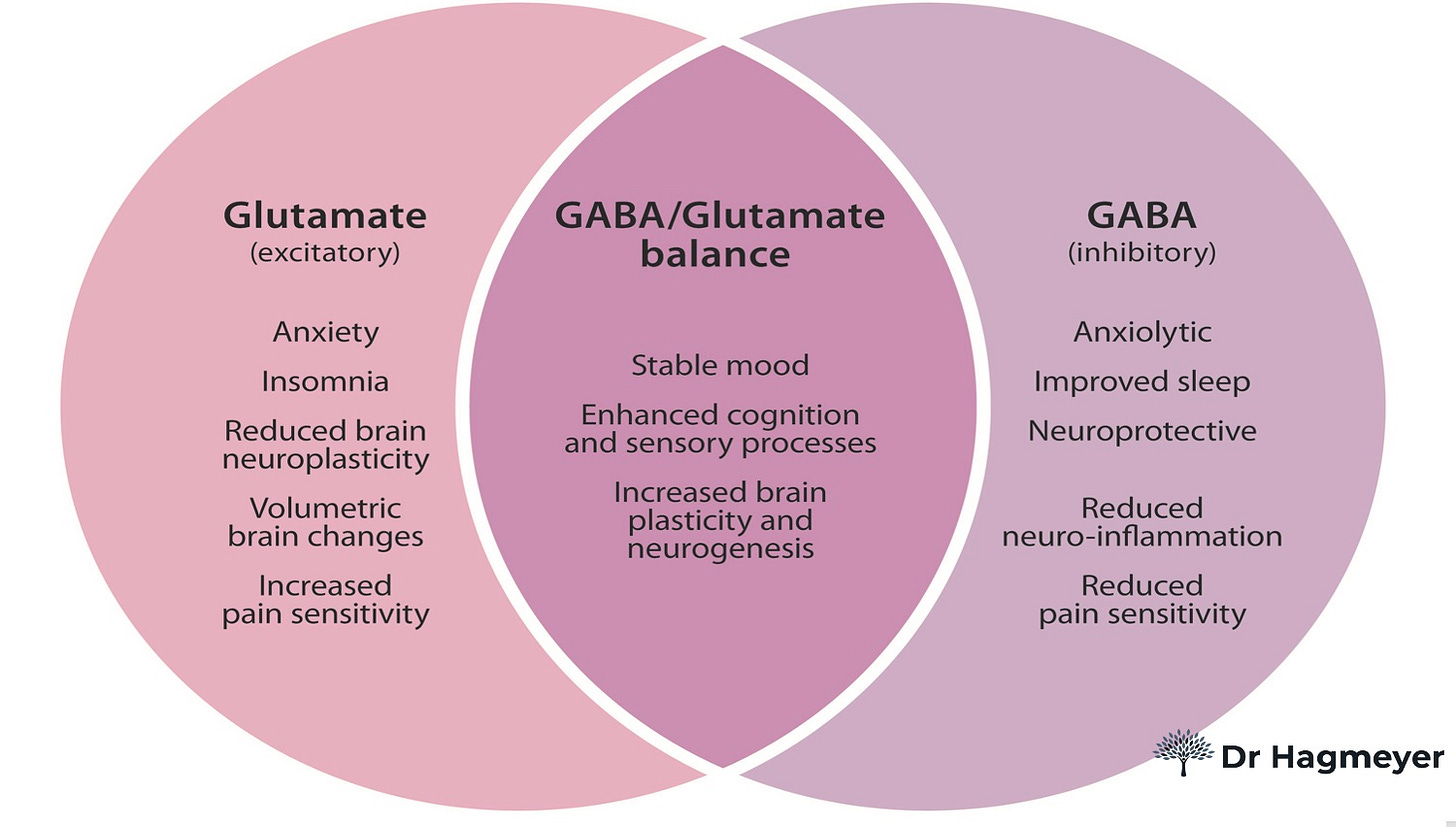
HPA Axis Regulation
Optimal hypothalamic-pituitary-adrenal axis regulation prevents excessive cortisol surges during bouts of acute stress. Conversely, dysregulated HPA function amplifies stress reactivity by increasing noradrenergic tone and adding fuel to the neuroexcitatory fire.
Testosterone/Estradiol Balance
The T/E2 matrix predicts stress response patterns:
High T + Moderate E2 → Calm assertiveness. Willing to engage without aggression.
High T + Low E2 → Short fuse. Easily triggered.
Low T + High E2 → Conflict avoidance. Passive under pressure.
Low T + Low E2 → Flat affect. No vitality.
Sign #8: Tolerating Uncertainty Without Your Phone
How often do you grab your phone → swipe to a screen → open an app → then think: “What am I doing here?”
This reflexive reach reveals uncertainty tolerance. It highlights your capacity to withstand discomfort without digital escape.
The Erosion Pattern
Excessive phone pickups progressively degrade your ability to navigate ambiguity19. Each reflexive grab trains your nervous system to avoid uncertainty rather than process it.
The inverse signals robust psychological resilience: sitting comfortably without digital distraction in silence with your own thoughts indicates well-regulated autonomic function & adaptive emotion regulation.
The Frictional Layer Model
The practical point here is uncertainty tolerance is trainable. The strategy to develop: create friction between impulse & action with each frictional layer increasing the cognitive cost of mindless engagement.
Example:
Layer 1: Phone on corner of desk
Layer 2: Phone on “do not disturb” on desk
Layer 3: Phone on “do not disturb” off desk in same room
Layer 4: Phone in different room
Layer 5: Phone in different room inside drawer or closet. “Why the drawer/closet?” Simple. Opening it forces conscious intention.
If you can experience momentary boredom or uncertainty without reaching for stimulation, you’ve maintained the cognitive capacity modernity systematically erodes.
Defeat the distraction epidemic one frictional layer at a time.
Sign #9: Internal Dialogue Never Shit Talks Self Or Significant Other
This crushes more people than anything else on this list. The worst offenders? High-performing, ambitious men.
If this is new to you, you likely don’t realize: 1) how often you do it subconsciously and 2) how psychologically carcinogenic it becomes.
The Disconnect
The first time I considered this was Peter Attia’s mention of it in his 2022 book Outlive: The Science and Art of Longevity:
What does our inner dialogue sound like? Is it kind and forgiving and wise, or is it harsh and judgmental, like my inner Bobby Knight? One of the most powerful exercises I learned was to simply listen to my self-talk…My instinct in these situations was typically to scream at myself for failing somehow. My therapist at PCS told me to imagine instead that my best friend had performed exactly as I had done. How would I speak to him? Would I berate him the way I often berated myself? Of course not. This was a slightly different take on reframing, forcing me to step outside myself and really see the disconnect between my “mistakes” (minor) and the way I talked to myself about those mistakes (brutal). I did this multiple times a day, every single day, for about four months…Over time, my inner Bobby Knight became fainter and fainter, and today it’s almost hard for me to remember what that voice used to sound like.
Here's a dude who accomplished some wildly successful feats in his early adulthood. Medical degree from Stanford. Trained in General Surgery at Johns Hopkins. Completed an Ironman. Yet still battled severe self-denigration.
Psychology as Physiology
The health discourse has advanced significantly in our health space, but we still undervalue the bidirectional relationship between psychology and physiology. A 1985 New England Journal of Medicine20 editorial captured the old paradigm:
“it is time to acknowledge that our belief in disease as a direct reflection of mental state is largely folklore”
We now know psychological stress21 is modernity’s real bioweapon.
The Relationship Test
This extends to how you think about your significant other. Chronic negative internal dialogue about your relationship predicts poor outcomes. Relationship quality at 40 is among the strongest predictors of physical health at 8022.
Sign #10: 24 Hours Without Social Media/Music/Podcast = Easy
If 36 hours without food should be manageable, 24 hours without social media, music, or podcasts should be equally effortless.
What Digital Abstinence Reveals
The capacity for voluntary digital fasting tests increasingly critical skills as automation accelerates:
Dopaminergic balance & high receptor sensitivity23 → baseline dopamine function and receptor sensitivity remain intact without constant stimulation
Regulation of the hypothalamic-pituitary-adrenal (HPA) axis24 → stress response systems don’t require digital pacification or activation
Neuroplasticity25 → brain maintains capacity to generate novel thought patterns without external input
Interoceptive awareness26 → ability to perceive and interpret internal physiological states without distraction
While everyone else is soaking themselves in cheap dopamine within seconds of waking — we’re locking in. Simple.
Sign #11: Dump Sweat During Exercise
Sweat capacity functions as an S-tier proxy for thermoregulatory & metabolic adaptation. It answers an important question: Are you highly trained?
The Trained Sweating Response
Compared to undertrained individuals27, habitually trained subjects demonstrate upregulated peripheral sweating mechanisms across multiple dimensions:
Shorter sweat onset time → trained individuals initiate sweating faster as exercise intensity increases
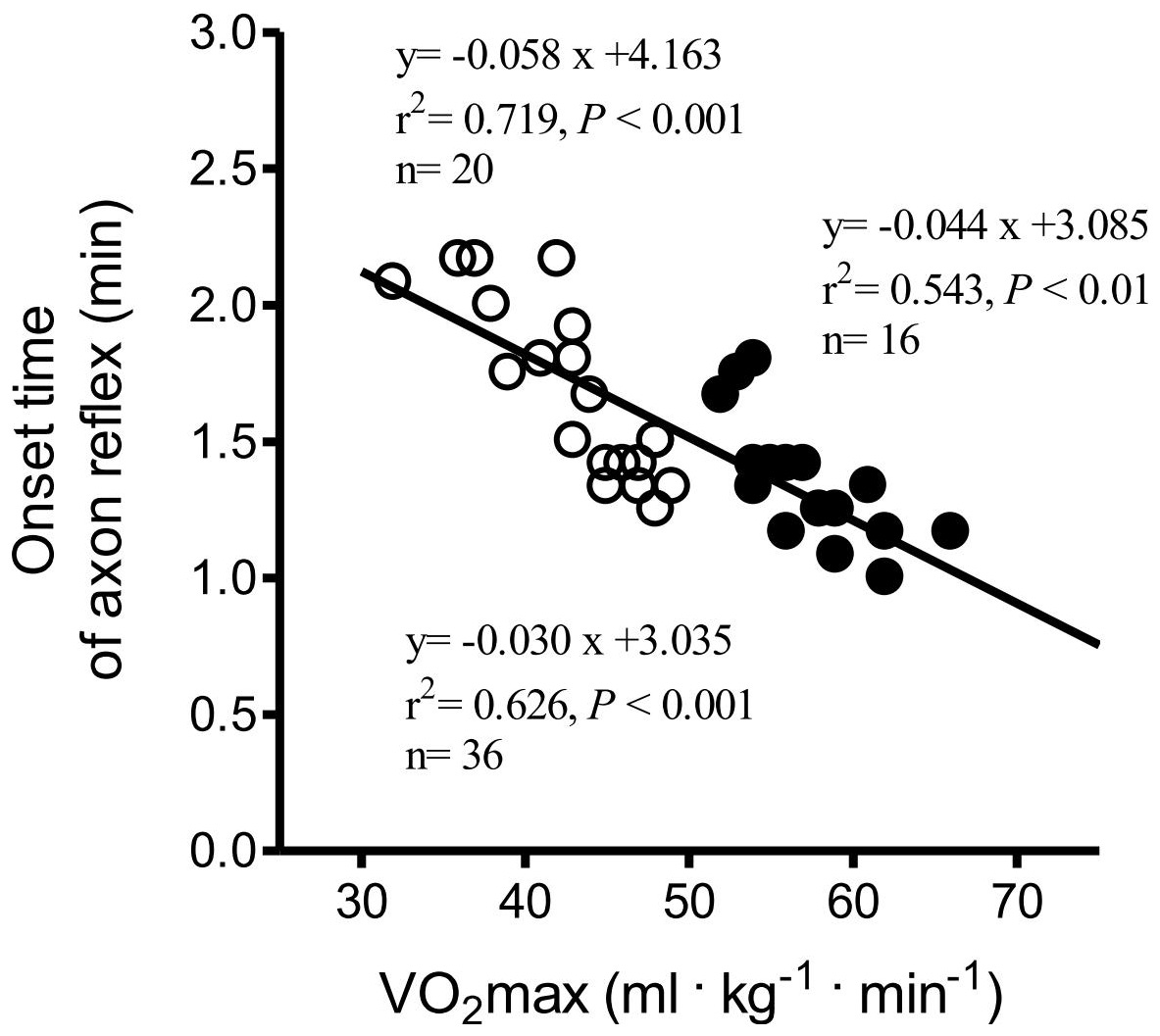
Higher sweat rates → greater volume of sweat produced per unit of time
Increased number of activated sweat glands → more glands recruited during thermal stress
Greater sweat output per gland → each individual gland produces more sweat than sedentary counterparts
All four correlate positively with VO₂max.
High-intensity training creates a thermal management cascade:
Muscle contraction generates heat (ATP hydrolysis + mitochondrial respiration) → thermoregulatory system initiates rapid sweating → efficient heat dissipation maintains core temperature → sustained high-level metabolic activity without overheating.
Robust sweating also indicates efficient lymphatic clearance. Critical for removing metabolic waste & supporting immune function.
If you made it this far, you’re serious about health optimization.
These 11 signs reveal functional health, but comprehensive blood work remains critical for identifying what you can’t observe — subclinical deficiencies, hormonal imbalances, metabolic dysfunction hiding beneath the surface.
That’s why I use Superpower.
100+ biomarkers tracked longitudinally
3,000+ labs nationwide for convenient testing
24/7 unlimited access to medical practitioners
The Superpower team is offering BTP readers 10% off for less than $15/month.
Test. Don’t guess.
That’s a wrap for this week.
Stay elite. And until next time.
Your friend,
Phys
Auger RR, Burgess HJ, Emens JS, Deriy LV, Thomas SM, Sharkey KM. Clinical Practice Guideline for the Treatment of Intrinsic Circadian Rhythm Sleep-Wake Disorders: Advanced Sleep-Wake Phase Disorder (ASWPD), Delayed Sleep-Wake Phase Disorder (DSWPD), Non-24-Hour Sleep-Wake Rhythm Disorder (N24SWD), and Irregular Sleep-Wake Rhythm Disorder (ISWRD). An Update for 2015: An American Academy of Sleep Medicine Clinical Practice Guideline. J Clin Sleep Med. 2015 Oct 15;11(10):1199-236. doi: 10.5664/jcsm.5100. PMID: 26414986; PMCID: PMC4582061.
Melmed, S., Polonsky, K. S., Larsen, P. R., & Kronenberg, H. M. (Eds.). (2015). Williams Textbook of Endocrinology (13th ed.). Elsevier.
Baron KG, Reid KJ. Circadian misalignment and health. Int Rev Psychiatry. 2014 Apr;26(2):139-54. doi: 10.3109/09540261.2014.911149. PMID: 24892891; PMCID: PMC4677771.
Ma C, Li Y, Mei Z, Yuan C, Kang JH, Grodstein F, Ascherio A, Willett WC, Chan AT, Huttenhower C, Stampfer MJ, Wang DD. Association Between Bowel Movement Pattern and Cognitive Function: Prospective Cohort Study and a Metagenomic Analysis of the Gut Microbiome. Neurology. 2023 Nov 14;101(20):e2014-e2025. doi: 10.1212/WNL.0000000000207849. Epub 2023 Sep 29. PMID: 37775319; PMCID: PMC10662989.
Peng X, Li J, Wu Y, Dai H, Lynn HS, Zhang X. Association of Stool Frequency and Consistency with the Risk of All-Cause and Cause-Specific Mortality among U.S. Adults: Results from NHANES 2005-2010. Healthcare (Basel). 2022 Dec 22;11(1):29. doi: 10.3390/healthcare11010029. PMID: 36611489; PMCID: PMC9818668.
Johnson-Martínez JP, Diener C, Levine AE, Wilmanski T, Suskind DL, Ralevski A, Hadlock J, Magis AT, Hood L, Rappaport N, Gibbons SM. Aberrant bowel movement frequencies coincide with increased microbe-derived blood metabolites associated with reduced organ function. Cell Rep Med. 2024 Jul 16;5(7):101646. doi: 10.1016/j.xcrm.2024.101646. PMID: 39019013; PMCID: PMC11293344.
Engfeldt P, Bolinder J, Ostman J, Arner P. Influence of fasting and refeeding on the antilipolytic effect of insulin in human fat cells obtained from obese subjects. Diabetes. 1985 Nov;34(11):1191-7. doi: 10.2337/diab.34.11.1191. PMID: 3899815.
Hong BV, Rhodes CH, Agus JK, Tang X, Zhu C, Zheng JJ, Zivkovic AM. A single 36-h water-only fast vastly remodels the plasma lipidome. Front Cardiovasc Med. 2023 Sep 7;10:1251122. doi: 10.3389/fcvm.2023.1251122. PMID: 37745091; PMCID: PMC10513913.
SpectorPR. (2011, April 5). Edward L. Bernays Video [Video]. YouTube. https://www.youtube.com/watch?v=KLudEZpMjKU
Chaput JP, McHill AW, Cox RC, Broussard JL, Dutil C, da Costa BGG, Sampasa-Kanyinga H, Wright KP Jr. The role of insufficient sleep and circadian misalignment in obesity. Nat Rev Endocrinol. 2023 Feb;19(2):82-97. doi: 10.1038/s41574-022-00747-7. Epub 2022 Oct 24. PMID: 36280789; PMCID: PMC9590398.
Birder LA, Van Kerrebroeck PEV. Pathophysiological Mechanisms of Nocturia and Nocturnal Polyuria: The Contribution of Cellular Function, the Urinary Bladder Urothelium, and Circadian Rhythm. Urology. 2019 Nov;133S:14-23. doi: 10.1016/j.urology.2019.07.020. Epub 2019 Jul 29. PMID: 31369749.
Kim SJ, Kim JW, Cho YS, Chung KJ, Yoon H, Kim KH. Influence of Circadian Disruption Associated With Artificial Light at Night on Micturition Patterns in Shift Workers. Int Neurourol J. 2019 Dec;23(4):258-264. doi: 10.5213/inj.1938236.118. Epub 2019 Dec 31. PMID: 31905272; PMCID: PMC6944784.
Selmaoui B, Touitou Y. Association Between Mobile Phone Radiation Exposure and the Secretion of Melatonin and Cortisol, Two Markers of the Circadian System: A Review. Bioelectromagnetics. 2021 Jan;42(1):5-17. doi: 10.1002/bem.22310. Epub 2020 Nov 25. PMID: 33238059.
Xue, F., Zhou, Y. Relationship between METS-IR and ABSI index and the prevalence of nocturia: a cross-sectional analysis from the 2005–2020 NHANES data. Sci Rep 14, 29971 (2024). https://doi.org/10.1038/s41598-024-81721-3
Song QX, Suadicani SO, Negoro H, Jiang HH, Jabr R, Fry C, Xue W, Damaser MS. Disruption of circadian rhythm as a potential pathogenesis of nocturia. Nat Rev Urol. 2025 May;22(5):276-293. doi: 10.1038/s41585-024-00961-0. Epub 2024 Nov 14. PMID: 39543359; PMCID: PMC12285584.
Alwis US, Monaghan TF, Haddad R, Weiss JP, Roggeman S, Van Laecke E, Vande Walle J, Wein AJ, Everaert K. Dietary considerations in the evaluation and management of nocturia. F1000Res. 2020 Mar 5;9:F1000 Faculty Rev-165. doi: 10.12688/f1000research.21466.1. PMID: 32185022; PMCID: PMC7059782.
Gong H, Zhao W, Choi S, Huang S. The association between magnesium depletion score (MDS) and overactive bladder (OAB) among the U.S. population. J Health Popul Nutr. 2025 Apr 3;44(1):106. doi: 10.1186/s41043-025-00846-x. PMID: 40181471; PMCID: PMC11969968.
Meakins TS, Persaud C, Jackson AA. Dietary supplementation with L-methionine impairs the utilization of urea-nitrogen and increases 5-L-oxoprolinuria in normal women consuming a low protein diet. J Nutr. 1998 Apr;128(4):720-7. doi: 10.1093/jn/128.4.720. PMID: 9521634.
Buhr K, Dugas MJ. Investigating the construct validity of intolerance of uncertainty and its unique relationship with worry. J Anxiety Disord. 2006;20(2):222-36. doi: 10.1016/j.janxdis.2004.12.004. PMID: 16464706.
Angell M. Disease as a reflection of the psyche. N Engl J Med. 1985 Jun 13;312(24):1570-2. doi: 10.1056/NEJM198506133122411. PMID: 4000189.
Yaribeygi H, Panahi Y, Sahraei H, Johnston TP, Sahebkar A. The impact of stress on body function: A review. EXCLI J. 2017 Jul 21;16:1057-1072. doi: 10.17179/excli2017-480. PMID: 28900385; PMCID: PMC5579396.
Rook KS, Charles ST. Close social ties and health in later life: Strengths and vulnerabilities. Am Psychol. 2017 Sep;72(6):567-577. doi: 10.1037/amp0000104. PMID: 28880103; PMCID: PMC5599123.
Schmitgen, M. M., Henemann, G. M., Koenig, J., Otte, M.-L., Rosero, J. P., Bach, P., Haage, S. H., Wolf, N. D., & Wolf, R. C. (2025). Effects of smartphone restriction on cue-related neural activity. Computers in Human Behavior, 160, Article 108610. https://doi.org/10.1016/j.chb.2025.108610
Pedersen J, Rasmussen MGB, Sørensen SO, Mortensen SR, Olesen LG, Brage S, Kristensen PL, Puterman E, Grøntved A. Effects of limiting digital screen use on well-being, mood, and biomarkers of stress in adults. Npj Ment Health Res. 2022;1(1):14. doi: 10.1038/s44184-022-00015-6. Epub 2022 Oct 12. PMID: 37521498; PMCID: PMC9554843.
Zhou D, Kang Y, Cosme D, Jovanova M, He X, Mahadevan A, Ahn J, Stanoi O, Brynildsen JK, Cooper N, Cornblath EJ, Parkes L, Mucha PJ, Ochsner KN, Lydon-Staley DM, Falk EB, Bassett DS. Mindful attention promotes control of brain network dynamics for self-regulation and discontinues the past from the present. Proc Natl Acad Sci U S A. 2023 Jan 10;120(2):e2201074119. doi: 10.1073/pnas.2201074119. Epub 2023 Jan 3. PMID: 36595675; PMCID: PMC9926276.
Haruki Y, Miyahara K, Ogawa K, Suzuki K. Attentional bias towards smartphone stimuli is associated with decreased interoceptive awareness and increased physiological reactivity. Commun Psychol. 2025 Mar 17;3(1):42. doi: 10.1038/s44271-025-00225-6. PMID: 40097559; PMCID: PMC11914067.
Lee JB, Kim TW, Min YK, Yang HM. Long distance runners present upregulated sweating responses than sedentary counterparts. PLoS One. 2014 Apr 7;9(4):e93976. doi: 10.1371/journal.pone.0093976. PMID: 24709823; PMCID: PMC3977973.




